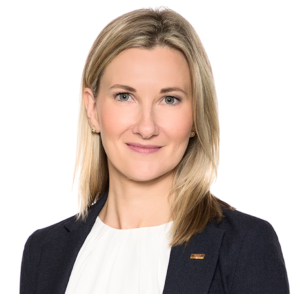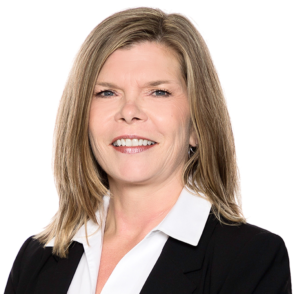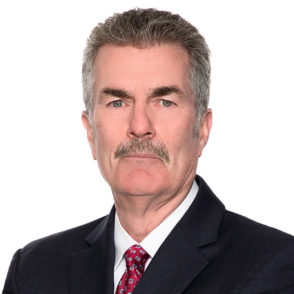The last two years have been among the most uncertain the world has ever experienced by any standard. The Excess and Surplus (E&S) Lines insurance marketplace has stepped up to meet the challenge experiencing strong growth and perseverance in the face of a global pandemic, extraordinary natural catastrophes, increasing cyber-attacks, excessive jury verdicts, supply chain disruptions, political unrest, labor shortages and more. The specialty marketplace is more vibrant than ever before and continues to evolve as business migrates from the standard marketplace.
Among the many reasons noted, perhaps none is greater than the unprecedented natural catastrophe (CAT) claims experienced last year. While 2021 started with great optimism surrounding topics such as a breakthrough vaccine to combat the global pandemic COVID-19, the industry was in for a bumpy ride relative to CATs:
- An a-typical winter storm named Uri in February resulted in a prolonged freeze in the gulf states creating a $15B estimated loss to the industry as reported by Swiss Re. The first quarter which typically is most insulated from CATs set the foundation for what was yet come.
- The anticipated Atlantic Hurricane CAT season which followed shortly thereafter resulted in 21 named storms with 8 making U.S. landfall, the third most active year according to the National Hurricane Center. The traditional CAT season of June 1 – November 30 will however be remembered by Ida as the trail of destruction and loss of life spanned many U.S. states from the Gulf Coast through New England. Losses are still being tallied, however estimates as of this writing are in the $30B range according to many industry forecasters.
- As if we didn’t already have our share of Natural Catastrophes, December commenced with Tornadoes wreaking havoc tearing a 200-mile path of destruction throughout 6 South and Midwest states with Kentucky and Tennessee experiencing the worst of its fury.
- Regrettably that was not the end as the Wildfires in Boulder County Colorado December 30th destroyed an estimated 1,000 structures resulting in an estimated $1B loss according to Karen Clark & Company (KCC).
Bookends of Natural Catastrophes here in the U.S. were not all that dominated 2021 CAT headlines as European flood losses over the summer months are estimated in the $20B range. All totaled, the costliest year for CAT related claims globally—as well as here in the U.S. where estimates are creeping toward $110B, far exceeding any other year. AIR Worldwide reported late October that a greater than 40% chance exists the industry will face a $200B CAT loss year in the next decade. Such an estimate is difficult to comprehend when compared to the past decade where average annual CAT losses averaged approximately $75B annually. AIR Worldwide also reminds us that approximately only 50% of economic loss from CATs are insured in North America with the rate dropping to approximately 20% in other parts of the world.
We will delve into the topic of how Nat CATs will impact the E&S Property and Personal Line space as our experts discuss the topic in greater detail throughout our report. Importantly, the significance of properly modeling an account has never been greater as Carriers will only deploy capacity when they feel they are getting an adequate return based on fair and current estimates of exposure via thorough and quality submissions.
RATE
Every account is underwritten on its own merit with every detail taken into consideration including loss history, commitment to risk avoidance measures, location of risk and many other unique characteristics disallowing a broad brushed position on this important topic. We do however provide our outlook by various lines of business and the wider categories of Commercial, Personal and Professional within other areas of this report. However, suffice it to say, buyers should be prepared for increases with few exceptions.
In addition to a prolonged soft market through 2019, emerging trends contributing to this outlook are:
- Social inflation
- A-typical weather patterns
- Increasing cyber threats with far reaching implications
- Supply chain bottlenecks
- Worker shortages
- And of course, a global pandemic
Increased technical and comparative underwriting contributed to a global resolve of the insurance industry to return to profitable underwriting through careful deployment of aggregate with carefully worded policy language and adequate rate/premium to accept the risk.
The pivotal January 1st renewal date was anything but ordinary with rates exceeding many analysts estimates and deals not being finalized well into the new year. Unlike previous years when reinsurance costs lagged the direct marketplace, that trend has shifted further underscoring our outlook that the increased expense of reinsurance will be passed along to policy holders through further increased rate.
CAPACITY
Not dissimilar to 2021, capacity remains intact with no shortages other than very targeted areas such as Commercial Lines property and Personal Lines in specific coastal and other high CAT prone geographies. Importantly, our Personal Lines aggregate capacity is generally more than previous years, however finite and reserved for preferred clients and risks that warrant same. Commercial Property aggregate is similarly finite with carriers managing capacity carefully. In both instances be prepared for sharply increased rate coupled with explicit changes to deductible and coinsurance clauses to meet the demand.
Liability capacity remains plentiful, despite shorter limits on excess placements requiring more participants to fulfill limit requirements. This is unchanged from earlier reports and likely to continue as carriers manage spread of risk more carefully.
Most other lines of business regardless of first- or third-party exposure have sufficient capacity to meet demand. Unlike earlier so called “hard markets”, capacity remains intact with (Re)Insurers correctly managing profitability through other means, namely disciplined underwriting.
TERMS & CONDITIONS (T&C)
Our theme throughout the report this time last year was ‘underwriting discipline,” suffice it to say that continues as Carriers are being selective and continue to refine terms and conditions to meet their goals. While this may have been the name of the game the last few years, the marketplace continues to refine policy language to accurately reflect their intent relative to risk characteristics. Emerging exposure and risks such as third-party supply chain disruption, the rapid expansion of cryptocurrency and the often fine line between traditional liability policies and E&O policies will continue to evolve through careful crafting of policy language. Disciplined underwriting is paramount to the industry for risk takers to fulfill their obligations in an increasingly volatile environment.
Consistent with earlier reports, clients must carefully review policies to ensure they fully understand the coverage provided as it is often fluid in challenging markets such as this. Coverages once considered common now have an associated value, so be sure you to not overlook the cost/benefit analysis of individual coverages and policy enhancements when negotiating renewals.
NEW MARKET ENTRANTS
Startups / Expanded Appetite:
Although not a new market per-se, ProSight, the Specialty Niche Insurer, has significantly changed its strategic direction following a 2021 change in ownership and leadership. In short, they are shifting direction in the development of what is best described as a traditional E&S/Specialty Insurer focusing on brokerage Property, Casualty, Professional as well as development of a delegated/binding authority initiative. We welcome this change and are in deep dialogue with ProSight within these new, more traditional, areas of conducting business.
The fury of startup Carriers, as experienced throughout late 2020 and the majority of 2021, seems to have slowed in the later part of last year, relatively speaking. The momentum however seems to have shifted to opportunistic equity, backing the development of MGA/MGU InsurTech organizations. This shift signals the continued demand for specialized underwriting utilizing third party data and cutting-edge technology to augment traditional generalized underwriting.
Similarly, traditional insurers are hoping to enter, or in some instances re-enter, the now lucrative U.S. E&S sector, many of which considering delegated authority to trusted partners. Namely, Zurich, the large global powerhouse, is increasing its presence within this space from both a brokerage and delegated authority perspective. Others, including AIG and Liberty Mutual are maintaining their position of E&S product distribution via Wholesale and Specialty only brokers and MGAs—a welcomed change from the disjointed model of several years ago.
Contributor: Paul G. Smith, Corporate Senior Vice President, Carrier Relations, H.W. Kaufman Group
Q4 2021 OVERVIEW & Q1 2022 FORECAST (US)
Our industry leading subject matter experts dissected the marketplace and provided insights on the Burns & Wilcox Eye on 2022: Specialty Insurance Overview webinar, hosted January 6, 2022.
As detailed previously and messaged throughout this report—capacity remains tight and rising premiums will continue across most lines of businesses, especially in geographic areas around the world deemed to be at elevated risk for catastrophic (CAT) storms like hurricanes and wind/hail events, or for large-scale fires.
Coupled with carrier exits, new and emerging exposures, and social implications, brokers will need to continue to work closely with experts, such as Burns & Wilcox, to ensure clients can access coverage—requiring a level of partnership and collaboration that can be a competitive differentiator.
Personal Insurance:
Along with the ongoing pandemic, 2021 began with an unprecedented ice storm and deadly power outage in Texas in January and ended with destructive tornadoes in multiple Midwestern states and historically tragic wildfires in Colorado in December.
Of the ten costliest forest fires in U.S. history, eight have happened in the last three years at an estimated cost of $40 billion. Large coastal areas of Florida and the Gulf Coast are considered uninsurable by many carriers because of other CAT storms. With everyone in the industry acutely aware of the impact natural disasters are having, it remains uncertain what capacity for buying insurance in high-risk areas will be in the months and years ahead.
In 2022, we expect to see a continuation of the conservative marketplace—increased rates, constricting underwriting appetites, tightening of terms, and overall shrinking of capacity.
The Personal Insurance market needs to prepare for less capacity and higher premiums in the foreseeable future. It is why modeling is no longer a suggestion but a necessity. Carriers are tied to modeling results, which hinge on property inspection and appropriate valuations provided to underwriters during the renewal process.
As the industry becomes better equipped to handle big data, modeling of risks has become more of an everyday activity. We must acknowledge that data driven models and reports are going to drive a lot decisions moving forward and there will be an overall desire from carriers to write properties that have positive predictive results from a profit standpoint.
While it feels like the industry is becoming mechanical, relationships are still very important. With obvious challenges, there are still plenty of good stories coming out of 2022. Burns & Wilcox has continued to find solutions through expertise and partnerships in 2021 and will continue to do so in 2022. We are here to help.
Contributor: Bill Gatewood, Corporate Senior Vice President, National Personal Insurance Practice Leader, Burns & Wilcox
Commercial P&C Insurance:
During the Wholesale & Specialty Insurance Association (WSIA) underwriting summit last November, it was made abundantly clear that Carrier bandwidth is stretched regarding submission flow. The sharp increase of business being competitively marketed as well as the continued flow from the admitted or standard market has never been greater. This coupled with insurers continuing to be quite selective accepting risks through diligent underwriting, often followed by deployment of less limit than in the past, has resulted in no greater time to engage a specialist broker with deep relationships.
Further, while buyers have experienced rate increases for several years now with a compounding affect, we expect 2022 to look much like 2021—it is going to be challenging. While we anticipate a continuation of rate increases and tightening of capacity, we also anticipate outcomes with incumbent insurers to be less impactful based on earlier rate increases, while new insurers will not have that luxury.
More specifically, while buyers should anticipate General Liability rate increases, it will have great fluctuation dependent upon industry, geography, and loss history. Certain classes of business remain more challenging than others, exacerbated by the jurisdiction(s) in which the exposure exists. The Excess Liability marketplace also remains quite challenging with great emphasis on attachment point of underlying policies and breadth of coverage, both of which will impact rate and participating insurers in building a tower.
On the property side, the number of billion-dollar plus natural catastrophes has increased every year for the last ten years. The trend is not expected to improve but rather intensify resulting in continued significant rate increase across most accounts. As discussed elsewhere within this publication, the confluence of increased CAT’s, improved modeling technology, significant treaty reinsurance rate hikes January 1st is resulting in careful distribution of aggregate with sharp increases and modified terms, particularly on deductible/coinsurance clauses.
It has never been more important to make sure you are working with an expert like the professionals at Burns & Wilcox. Carriers continue to be more selective and aligning yourself with experts who have the technical knowledge, expertise, and market relationships to put together the best terms and conditions for your clients is essential.
Contributor: Denis Brady, President, Burns & Wilcox Brokerage, San Francisco, California
Professional Liability:
Professional Liability is in the midst of a hard market. We don’t expect that to change in 2022.
There are three key items to keep your eyes on: rates, emerging markets and new exposures.
Expect double-digit growth in rates for D&O, Cyber and Healthcare. Within D&O, underwriters are looking at a company’s financial health and relative strength, COVID-19 resiliency, and cyber posture when assessing accounts.
Within Cyber Liability, there is no shortage of headlines that have impacted organizations and individuals. We are looking at 50-100 percent rate increases, restrictions in capacity, changing terms and conditions, and the addition of co-insurance. Working with the right firm to adequately insure your clients, such as Burns & Wilcox, will ensure subject matter experts are navigating the market—and doing so more effectively than generalists.
Emerging markets, such as InsurTechs, with more than $10 billion invested in the first three quarters of 2021, will continue to play an increasingly important role in terms of providing clients resources, data, benchmarking, and assistance with hardening a policyholders cyber security posture.
Perhaps the biggest new exposure is increased adoption of cryptocurrencies and blockchain technology. The market cap for cryptocurrencies reached $3 trillion last year and Visa processed more than $3.5 billion in crypto transactions alone. More than 36 percent of organizations accept some form of crypto payments, therefore we anticipate much more talk around crypto and related technologies in 2022. We at Burns & Wilcox are well positioned regarding this evolving exposure.
Increased regulation surrounding privacy laws will be a growing exposure to watch in the year ahead. 2021 saw record settlements surrounding biometric privacy violations, GDPR fines and numerous bans surrounding the use of facial recognition technology.
Contributor: David Derigiotis, Corporate Senior Vice President, National Professional Liability Practice Leader, Burns & Wilcox
Transportation Insurance:
The trends in the Transportation space through the fourth quarter of 2021 were driven and dominated by a need to get product to market. A robust economy and product shortages created by lack of materials resulted in a product demand unseen in decades. In some media, trucking companies were shown as the bottleneck in getting product to market. While this suggestion may be true in some cases, it comes about as a result of a driver shortage in addition to a general lack of product to distribute. This is unfortunately a trend that will continue well into 2022.
Transportation insurance carriers provided sufficient capacity on both the primary and excess layers with the only variable being price. We did see a number of non-fleet and small fleet programs enter the space, but overall, no real significant expansion of capacity. In 2022 there may well be additional capacity driven by expansion of new products from existing markets as well as increased appetite and growth objectives from established carriers.
There was a continuation of increased pricing actions during 2021 in both primary and excess with more significant rate change on excess. Primary pricing continued an upward trend, but at a much lower rate than in past years. In some cases, we started to see flat or even small rate decreases on the better risks. We expect this pricing trend to remain through mid-2022. Factors such as increased nuclear verdicts, courts reopening, and deteriorating combined ratios resulting primarily from greater exposure of miles driven, will likely result in another phase of rate escalation.
Last year was a challenging yet exceptional year for the Transportation insurance segment. Carriers have suggested slight improvement in results, coupled with healthy levels of topline growth. While the first couple of quarters in 2022 will likely mirror 2021, that may well change as the year progresses. The Transportation industry is driven in large part by the economy, therefore any significant changes or pandemic related influences will likely impact 2022 results.
Contributor: Gene’ Cain, Broker, Transportation, Burns & Wilcox Brokerage, Atlanta, GA
Environmental Insurance:
The reoccurring trend for 2021 continued to be climate change and weather which is linked to environmental contamination. 2021 ended with the largest wildfire catastrophe spurred on by extensive wind in Colorado’s history. Floods and wildfires resulting from changing weather patterns continue to have significant consequences with the spread of contaminants. Couple that along with floods, due to hurricanes such as Ida and increased rainfall, and we saw mold claims continue to rise in 2021.
The increase in the frequency and severity of environmental claims is expected to continue in 2022. This will be largely driven by natural disasters and extreme weather events such as wind, flood, wildfire, earthquakes, climate change, and human-made environmental disasters.
In addition, claims continue to increase due to perfluoroalkyl and polyfluoroalkyl substances (PFAs)—also known as “forever Chemicals.” The Environmental Protection Agency has advised that exposure to the man-made chemicals have been linked to adverse human health risks. In addition to PFAs another forever chemical which continues to be on the radar for regulators and insurers is glyphosate which is found in weed-killing products.
The demand for Pollution Legal Liability (PLL) continues to grow. PLL was stagnant in 2020, then we started to see the need for PLL growth in 2021 due to an increase in development which we anticipate will continue into 2022 . Contractors Pollution Liability (CPL) was also strong in 2021 and we see that continuing in 2022 due to the increase in construction activity and in mergers and acquisitions emerging from the pandemic.
Tightening terms and conditions point to rates finally stabilizing in 2022 after being soft for over 10 years. The Environmental marketplace shows the initial signs of a hardening market.
Contributor: Gina Jones, Vice President, Director, Environmental Programs, Burns & Wilcox, Denver, CO
Q3 OVERVIEW & Q4 FORECAST (CANADA)
Property & Casualty Insurance:
Rate increases are still possible in the Property area but the ability to raise rates is reaching a ceiling because of the continuous increases over the past few years. A high volume of contract submissions continues with new ventures opening, signaling further growth opportunities throughout 2022.
With COVID-19 restrictions still in place and new mandates and limits enacted in Ontario and throughout Canada, hospitality businesses, restaurants, and retailers in particular have been adversely affected with less foot traffic and reduced sales. Several classes of business are already reaching maximum premium rates.
Furthermore, many underwriting contracts renew in January 2022 with expectations that some carriers may exit certain markets, giving trusted advisors like Burns & Wilcox who have strong relationships in the market a competitive advantage. The rest of the year is expected to see the continuation of a tight market and a ceiling for premiums in certain sectors, with COVID-19 prevalence continuing to serve as the big unknown.
Contributor: Patricia Sheridan, Director, Ontario Commercial Insurance, Burns & Wilcox, Toronto, Ontario
Professional Liability:
The most significant challenge in the Professional market is that many carriers are not offering renewal terms given capacity reductions and rate increases that were so common in 2021. Premium increases at a minimum of 50-100 percent have been standard in recent years assuming coverage is even available as markets continue to impose more restrictive terms and stringent security controls. The short-term outcome is best described as rate stabilization.
Much of the same is true for the Health & Wellness sector, except rates are increasing. Demand remains high within the sector primarily due to some markets having exited this space in 2021. Architects & Engineers business continues to experience an increase in rating across all disciplines. Structural engineering firms and geotechnical engineering firms continue to be a challenge to write as markets choose not to consider these risks primarily due to unacceptable claim history.
Contributor: Paula Lansky, Manager, Professional Lines, Burns & Wilcox, Toronto, Ontario
Transportation Insurance:
Excess umbrella capacity continued to contract in the fourth quarter of 2021 with few insurers supporting liability towers for insured parties needing to travel from Canada into the U.S. The excess liability market will remain tight for transportation firms as there likely will be few new entrants in the market over the next 12 months. We will continue to monitor this important segment and provide updates in subsequent reports.
Motor truck cargo rates on the other hand remain comparatively stable overall. This is driven in large part to the Burns & Wilcox team growing its MTC portfolio through superior service and flexibility which is essential to providing higher limits.
Commercial underwriters also continued to mine the market for better performing accounts in late 2021 which “put a lid” on overall MTC market growth availability to the wholesale market. We expect commercial auto underwriters to continue the mining of these facility insured operations in 2022. The COVID-19 pandemic has reduced the number of accidents since early 2020, improving overall commercial results. This is expected to suppress MTC market growth similar to what was seen last year.
Retail brokers will also maintain high demands for superior service and response time on their MTC submissions. Despite these headwinds, Burns & Wilcox is well positioned to manage our retail partners’ demands for superior service and response times.
Contributor: John McGlynn, Director, Transportation, Burns & Wilcox, Toronto, Ontario
Environmental Insurance:
We anticipate rate erosion will continue within Canada’s Environmental market in 2022. While there was a temporary reprieve of that trend in early 2021, we are now predicting rate peaks and valleys due primarily to the impact of pricing wars irrespective of the greater P&C market climate.
Even with this trend the Burns & Wilcox Environmental team has been consistent in our underwriting and pricing strategy, carefully managing our renewal book from the whims of these pricing trends. A continuation of a flat to 10 percent average rate increase is expected for Q1 2022.
Environmental capacity remains steady to challenged, with dry cleaners, oil and gas, mining, and tanks over 20 years remaining undesirable classes. Meanwhile partners and competitors are increasingly pulling out of classes where they were once aggressive. Our consistent underwriting strategy has allowed us latitude to pivot and adapt as needed. We expect these challenges to remain through Q1 2022 as new capacity partners with broader appetites are identified and engaged.
The true financial impact of the pandemic on Environmental clients began to emerge in the last half of 2021 with a high number of contract cancellations. We believe the wave of increased policy cancellations has passed with improved projections in the coming year.
Our broker relationships continue to mature based on our technical MGA/hybrid market capabilities. This allows us to underwrite small or high-volume business and has resulted in larger, more complex opportunities and an increase in submissions. Continued engagement with brokers will be necessary for this trend to continue.
Contributor: Karim Jaroudi, Manager, Environmental, Burns & Wilcox, Toronto, Ontario
Personal Insurance:
Placing hard-to-place solutions was a continual theme throughout 2021 for Personal Lines as capacity remained tight. Both domestic standard markets and London in particular continue to be restrictive and selective in the accounts they will consider. Some markets have completely withdrawn from this segment, a frustration for clients, however our team has been successful in developing alternate solutions.
Contributor: Wendy McCormack, Senior Underwriter, Personal Lines, Burns & Wilcox, Toronto, Ontario
Q4 2021 OVERVIEW & Q1 2022 FORECAST (LONDON MARKET)
The common narrative is that carriers and syndicates are becoming increasingly selective, and capacity is tight. We expect those clients with a “clean” loss year will see 2.5 -10 percent rate increases. Those with claims in 2021 could see premiums jump as high as 15-40 percent.
The Lloyd’s and London markets are trying to provide more capacity, but it is a tough task given the current aversion carriers have to anything related to catastrophic (CAT) storms.
We’re in a period of a new normal where the extraordinary is no longer extraordinary. The markets are only willing to offer a finite amount of capital until the underwriting results for CAT events in the U.S. change. They are unlikely to change in the near-term, given that it was only five years ago (2017) when Hurricanes Harvey, Irma and Maria hammered the U.S. Those three storms remain the most expensive CAT storms to insurers in U.S. history. As a result, the discussions around climate change impact on the market have been increasing for five years.
All markets are wanting to reduce CAT exposure. As a result, supply and demand will be imbalanced quarter to quarter with markets exiting certain lines of business. This will continue to drive tight capacity and higher rates in 2022.
For more information, click here to view our International Insurance Overview video highlight.
Contributor: James Stevenson, Managing Director, H.W. Kaufman Group International
CONCLUSION / SUMMARY
Munich Re stated early January that the U.S. share of CAT losses for 2021 was estimated to be more than $85Bn, substantially contributing to expected global CAT loss estimate of $120Bn. These amounts are staggering and represent the second costliest year (along with 2005 & 2011) surpassed only by 2017. With every state now considered as having CAT exposure, buyers need to be prepared for upcoming renewals that will reflect this new normal as reinsurers did with treaty renewals at the onset of the new year.
The expense of risk transfer is becoming increasingly more significant as the industry grapples with the confluence of many factors as mentioned throughout the report. While CAT’s may be the dominant topic given their immediate impact and communication, we must not lose sight of the many other topical exposures covered throughout this report. Increased use of cryptocurrency, qualified labor shortages, supply chain constraints, political tensions, sympathetic juries, pandemic uncertainties, and back logged courts only further underscore the fragility of the current marketplace.
The Specialty and E&S insurance industry has shown its resilience and adaptiveness to meet not only the increased demand but the development of tools to assist in these unprecedented times. Use of third-party underwriting information, greater application of technology-based underwriting and attraction of data scientists to the industry to name a few. While full year 2021 statistics are not yet available, no doubt U.S. Surplus Lines premiums will substantially increase as will the number of transactions as wary insurers seek shelter from the admitted or standard marketplace.
Contributor: Paul G. Smith, Corporate Senior Vice President, Carrier Relations, H.W. Kaufman Group












